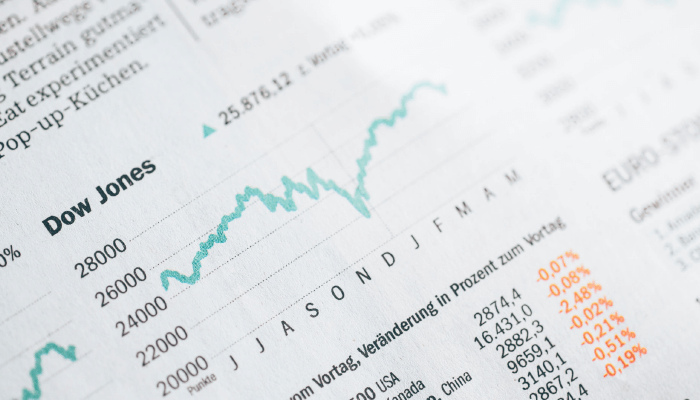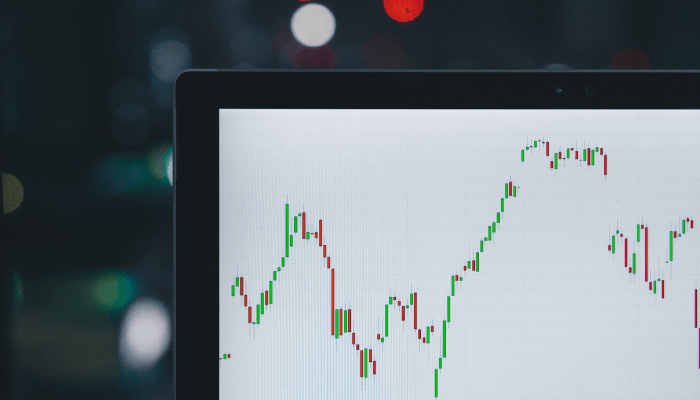With markets being so volatile recently and more free time on hands, now is a great time to learn new skills like online investing with paper trading software and brush up your skills with a stock trading simulator.
Markets are fast changing, technologies constantly evolve, and the strategies that are making you money today might not work so well in the near future. Add in the increasing risks of a recession and now is the perfect time to get ready.
Let’s look at how anyone can gain valuable experience and test investing strategies even if they don’t have money to invest right now.
USING PAPER TRADING PLATFORMS TO GAIN EXPERIENCE
When it comes to practicing stock trading, there is an easy way to gain experience without risking money: use simulated, virtual trading software also called paper trading software. Such applications emulate real stock market conditions and may even provide real-time or slightly delayed market data allowing students and other investors to practice trading without the risk of losing money. Oftentimes such software allows paper trade for free.

WHERE CAN I PAPER TRADE FOR FREE?
- Online Broker-Dealers offer paper trading accounts as a “try-before-you-buy” sales strategy. If you don’t hold a live trading account with the brokerage firm, such simulators may be restricted in time and/or features. F.ex. you can use a paper trading account for 14 days for free or you may only be able to trade equities, not options.
- Online Trading Schools and Educators provide paper trading tools. However, access is often part of a subscription or a bundled package. Ask for a free trial. It may also be tailored to a specific trading approach (e.g. day trading, options trading) or a specific asset class they trade.
- If you are a student at a college or university, you may have access to a paper trading platform as part of a curriculum. Professors and college administrators are working hard to find an appropriate demo trading software for their students.
- Check stock trading software developers websites. As an instance, ETNA is a software developer for broker-dealers and digital wealth management firms, however their product is free to use by individual traders as a virtual trading platform. Features include options trading, mobile trading access, simulated level II. For those who are involved in training people how to invest online ETNA Trader offers a white label paper trading platform with an ability to rebrand and personalize the software, access to administration control panel, real-time market data and simulated compliance tools.
When picking a virtual trading application pay attention to the following factors:
- Is it a web or desktop application? Make sure that your device meets the minimum requirements.
- Is paper trading available from a mobile device?
- What data is included – delayed or real-time?
- Is the same software available for real-time trading? Once you polished your trading skills with paper trading apps, it will save you time to use the same tools and set up for live trading.
- Can you personalize trading dashboard? One size doesn’t fit all, so it’s nice to have flexibility in setting up your own trading dashboards.
TRADING IDEAS AND STRATEGIES
Once you found and configured the software tools, it’s time to learn new strategies and insights, and then to put them to work. How about acquiring new insights? Check out the options below.

USING BOOKS TO GAIN TRADING INSIGHTS
You would think that many of the world’s best investors would want to keep their trading strategies secret. But many are more than happy to share their insights. There are tons of books on how to invest in capital markets. We selected a few of the best below.
The New Market Wizards: Conversations with America’s Top Traders. This book makes for a great summer read or addition to your autumn class readings, because it contains tips and insights from a large number of top traders. You get to see how a mind of a successful trader works and how they approach decision making. Along the way, you can copy their strategies, or develop your own
Most of the names won’t be familiar, unless you follow the world of finance closely. However, make no mistake about it, many of the people interviewed in this book are among the most successful in the industry.
Beating the Street (by Peter Lynch). Between 1977 and 1990, Peter Lynch was able to secure average annual returns of nearly 30 percent. This was roughly double the growth enjoyed by the S&P 500. Starting in the 1990’s, Lynch shifted more of his time towards publishing and education. In 1993, he released “Beating the Street”, a seminal investing book everyone should read.
Want something a bit more recent and expansive? Check out Lynch’s “The Intelligent Investor: The Definitive Book on Value Investing. A Book of Practical Counsel”. This book is one of the best and arguably most definitive guides to value investing.
THE INTERNET OFFERS A WEALTH OF KNOWLEDGE TOO
Not into reading books? Already have enough on your plate this fall? There are tons of great investing websites. You can check out “Investopedia” and learn about a huge range of topics, strategies, and other insights. Or, you can head to more specialized sites.
Many professors and educators are now encouraging their students to leverage the technology that we have right now. Books can get expensive and you’ll hear only a limited number of views. On the web, you can expose yourself to far more strategies.
Determining which strategies will work and which ones are right in a given situation or for a specific person is a far different matter. Reading and watching videos is great and all but at the end of the day, markets will determine success or failure.

